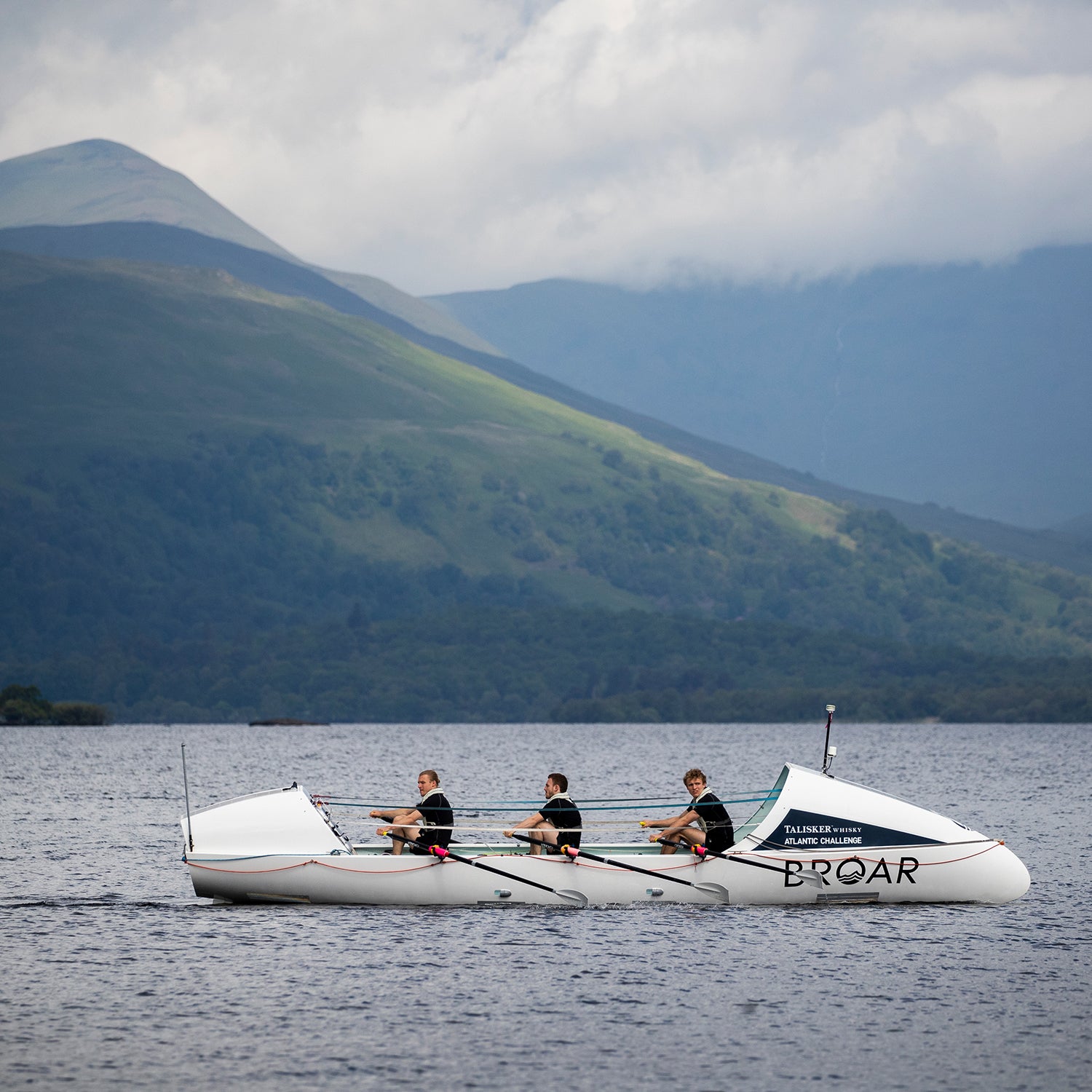Last year, while reporting an article on learning how to suffer better, I interviewed transatlantic rower Bryce Carlson. His stories about dodging hurricanes during his record-setting 38-day row across the North Atlantic were mind-boggling. But I mostly just asked him about how the lessons he’d learned from ocean rowing applied to the rest of his life, as opposed to what he’d learned about ocean rowing itself—because really, I figured, who does that?
The answer is “more people than I thought,” according . A research team led by Russell Hearn of King’s College London surveyed 71 ocean rowers about the health issues they encountered during their journeys, offering a vivid and occasionally stomach-turning look into what it takes to row your boat across an ocean. They recruited some of the rowers directly, and got in touch with others by putting word out on the ’s Facebook page, which has 2,800 members. There’s even an annual race, the , which draws as many as 30 teams to row from the Canary Islands to Antigua, and is wrapping up for the year as I write this. (Hearn and his colleagues have also just published on medical issues during the 2018 edition of that race.)
The rowers who responded to the survey had an average age of 37, with 41 men, 16 women, and 14 people who didn’t respond to that question. They spent an average of 46 days at sea, with a range of 2 to 92 days, mostly crossing the Atlantic, though there were a few who tried the Indian, Pacific, Mediterranean, and Southern crossings. Five people had to be rescued (presumably including the rower who was only out there for two days). The typical schedule for team crossings, according to previous research, is shifts of two hours on and two hours off around the clock. Solo rowers average just over ten hours of rowing per day.
In total, the 71 rowers reported 323 medical issues. By far the most common was skin problems: more than half of rowers reported pressure sores on their rear ends, and a similar number reported “salt sores/chafing/rashes.” Blisters, infections, cuts, and sunburn were also common. The advice from the researchers: a properly fitted rowing seat, especially if it has holes for the ischial tuberosities (“sit bones”); better hygiene; and a good thick protective skin cream.
The next most common category was injuries to muscles or joints. Once again, about half of rowers reported these issues, but the total number of complaints (45) was only about a quarter of the number of skin issues (169) since so many rowers had multiple skin problems. Hands, fingers, and wrists were the most common muscle/joint trouble spots, followed by knees, backs, and general soreness. One of the common complaints was “claw-hand,” which I remember from my days as a treeplanter in northern Ontario, when I’d wake up in the night with my shovel hand spasming into the shape of the shovel handle. Not fun.
The third category was mental health issues, led by 26 reports of hallucinations. A few cases of panic attacks, anxiety, and depression were also reported. The researchers note “physiological stress, severe sleep deprivation, and extreme exercise” as potential causes, as well as isolation. That all seems reasonable to me, although it doesn’t quite capture the extreme nature of what I imagine it would be like to be cooped up in a tiny capsule in the middle of a raging and dangerous ocean for weeks or months at a time, rowing for up to 12 hours a day. The surprise here is that there wasn’t 100 percent prevalence of mental health issues, though that may say more about the shortcomings of self-reported questionnaires than about the actual mental state of the rowers. The on Bryce Carlson that I wrote about last year, led by pain psychologist Kevin Alschuler, delves into some of the psychological techniques Carlson used to handle his challenges, ranging from acceptance and mindfulness to distraction and (my favorite!) resignation.
The last two major categories were seasickness, which affected less than half of the rowers, and gastrointestinal problems, which affected about a quarter of the subjects. Given the nature of the tiny boats and the big oceans, the seasickness numbers are surprisingly low, but there’s probably some self-selection at work: people who are prone to seasickness may be less likely to volunteer for these expeditions. The stomach issues also seem relatively minor, given that the rowers typically eat between 5,400 and 8,000 calories a day of mostly freeze-dried food. Carlson certainly found that a challenge, and the researchers suggest that future rowers should try living off these rations for a while before the trip, to get a sense of how their bodies react and whether any adjustments are needed.
That’s it, other than a few scattered bone fractures from capsizes, unexplained dizziness, and other isolated reports. Sound enticing? Yeah, me neither. When I talked to Carlson, I couldn’t help asking him the too-obvious question: Why? Did he have some sort of bizarre desire to suffer? His answer: “When I embark on training for a marathon, or training to row across the Atlantic, or actually rowing across the Atlantic, I’m pulled through that process by the vision of what the finish will be like—you know, this optimistic notion of how tough I will be, how resilient I will be, how good I will feel. So I don’t think it’s a notion of, in the moment, I’m excited to embrace discomfort or work. I do it because I’m inspired by what happens when I stick to it.”
As a runner, that actually sounds pretty familiar—just on a much grander scale. Maybe a few open sores and claw-hands is a small price to pay for the incredible feeling you get when you finally reach the other side of the ocean. Just make sure that your seat fits.
For more Sweat Science, join me on and , sign up for the , and check out my book .


